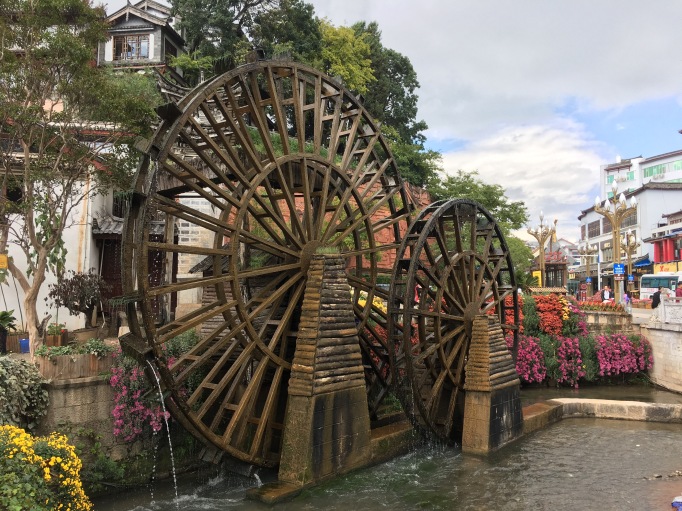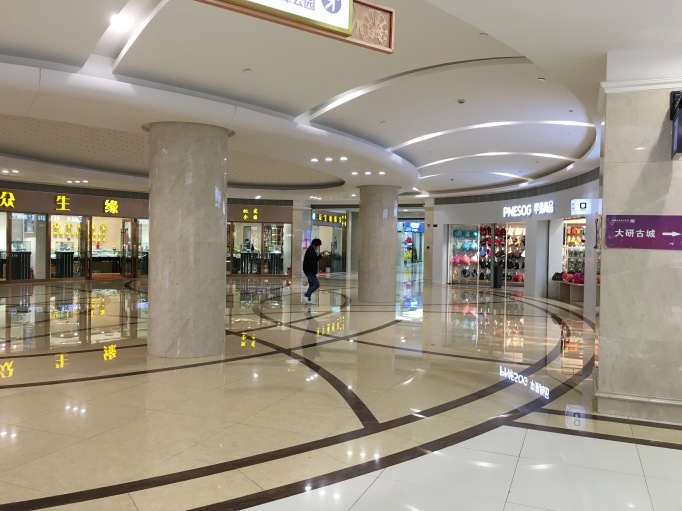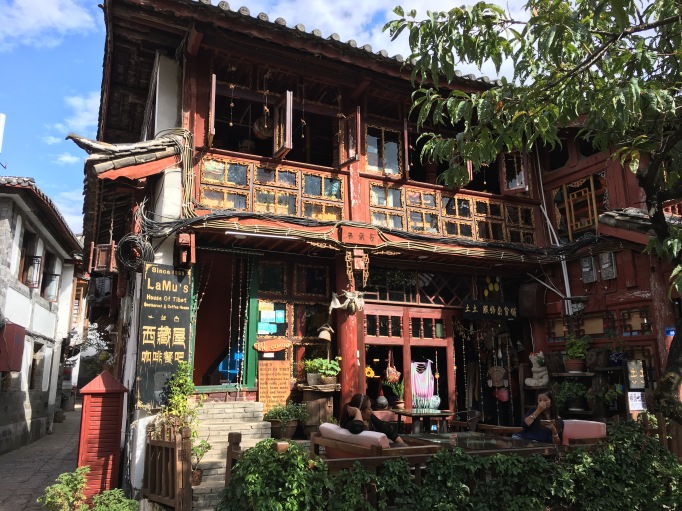Not only do you get meals at N’s Kitchen, but also help and advice regarding travel and sightseeing. The staff have a reasonable grasp of English which is certainly a rarity here in Lijiang. Their suggestion was to visit the Baisha Village and the Baisha Frescos (UNESCO World Heritage site) by catching the number 6 bus from the main road behind the Old Town water wheel…..so this is what I did today. The man at N’s Kitchen wrote Baisha in Chinese on a piece of paper for me, I also asked him to write the address for Lijiang Old Town in Chinese as well to ensure I could get back okay. I then headed off to find the bus stop and catch the number 6 bus. The 30 minute journey cost me 1CN¥ (12p) and the bus driver helpfully indicated where I needed to get off the bus.
Baisha Village lies at the foot of the Jade Dragon Snow Mountain about 8km to the north of Lijiang Old Town. It is the earliest settlement of the Naxi people and is the birthplace of ‘Tusi’, chief of the Mu clan. It was the political, economic and cultural centre of Lijiang prior to the Ming Dynasty (1368-1644). Its construction started during the Tang Dynasty (618-907) and it became prosperous during the Song (960-1279) and Yuan (1271-1368) Dynasties. From the Ming Dynasty, the governors moved their families to Lijiang Ancient Town but still built temples in Baisha Village, making this village a religious centre during the early Ming Dynasty. The existing Dabaoji, Liuli and Wenchang Palaces and the famous Baisha Frescos were completed during that period. Most of the paintings are about religious stories of Taoism, Buddhism, and Tibetan Buddhism and embody the artistic characteristics of the Naxi, Tibetan, Han and Bai ethnic groups. The majority of the existing Frescos are preserved in Dabaoji Palace.
My first stop was to visit the temples and Baisha Frescos; a very quiet and tranquil place.
On leaving the temple complex the path took me onto the main street through Baisha Village. The buildings are clearly very old and have not been restored to the Disneyesque appearance of Lijiang Old Town. There were less tourists and the pace of life seems much slower. I stopped in one cafe for a Sprite and service was definitely slow, but the Sprite was the cheapest yet!
I continued on down the street and then turned off to the left and came upon the Naxi Embroidery Institute. I had a look around their display room and then visited the Institute next door and ended up having a one to one tour and shown the intricate work of their embroiderers. They also give lessons, although none today. The quality, fineness and intricateness of the work being done was phenomenal. The finished pieces look like watercolours due to the delicate nature of the stitching……..amazing, and an unexpected treat to see this. My guide explained that the mission of the institute is to save, protect, inherit and promote the Naxi traditional hand-made embroidery.
I found the bus station (bus stop) in the village without too much difficulty and was soon back on the number 6 bus to Lijiang. I then had a late lunch snack at a cafe by the river before heading back to the hotel to await the arrival of the Tiger Leaping Gorge trekkers.
Word was out about the excellent LaMu’s meal last night so there was an enthusiasm amongst some of the group to go there tonight. I was certainly happy to go back again. Mr L and I were joined by Doreen, Julia, Wendy and Chris – everyone agreed it was a good venue and good food. Wendy and I both tried the Great Wall of China red wine and very good it was too. It was great to hear their stories and see their photos; definitely reinforced that my decision to stay behind was the correct one for me. I then took a weary Mr L on a brief orientation walk before heading home to bed.
Distance walked: 15,407 steps / 6.65 miles

























